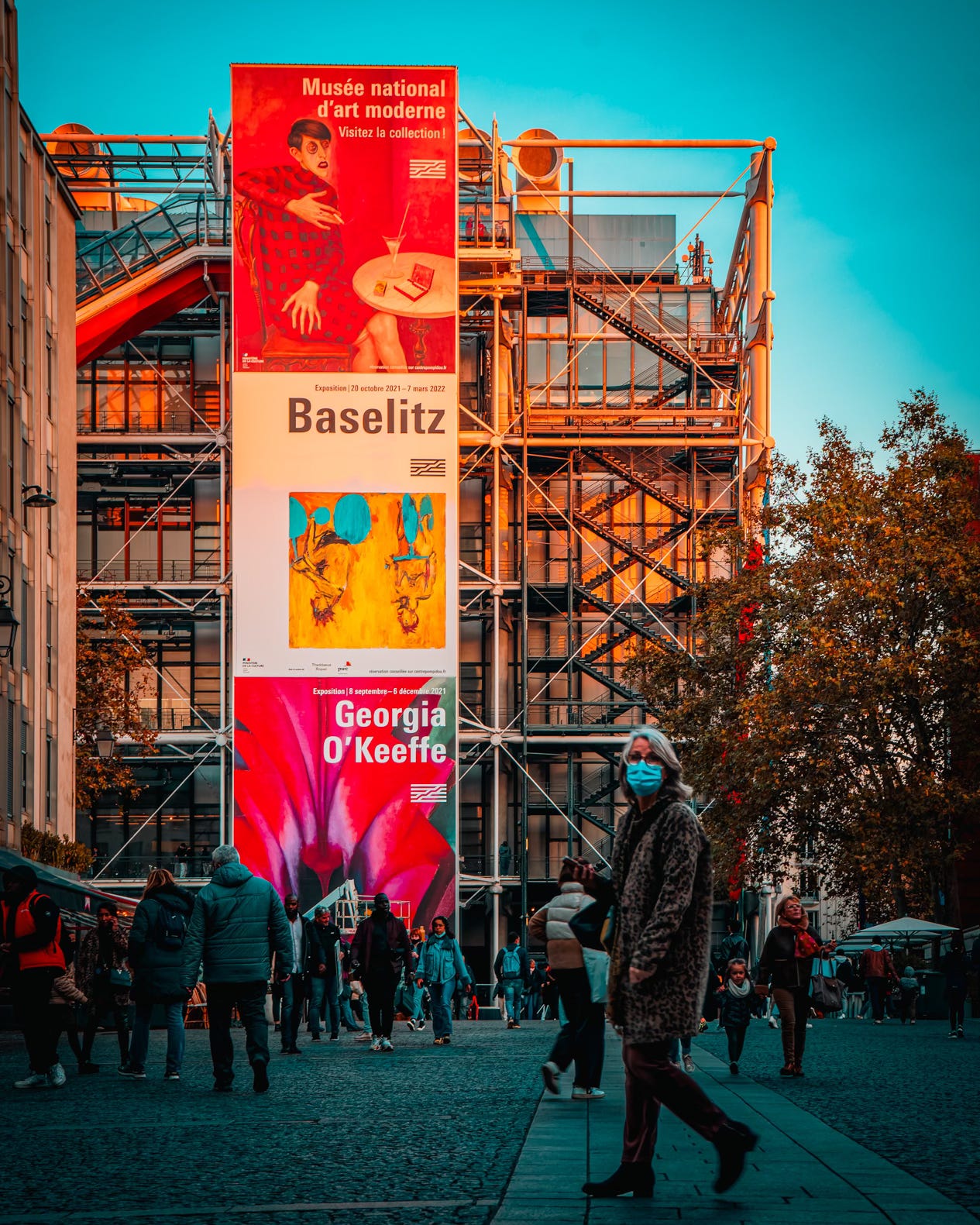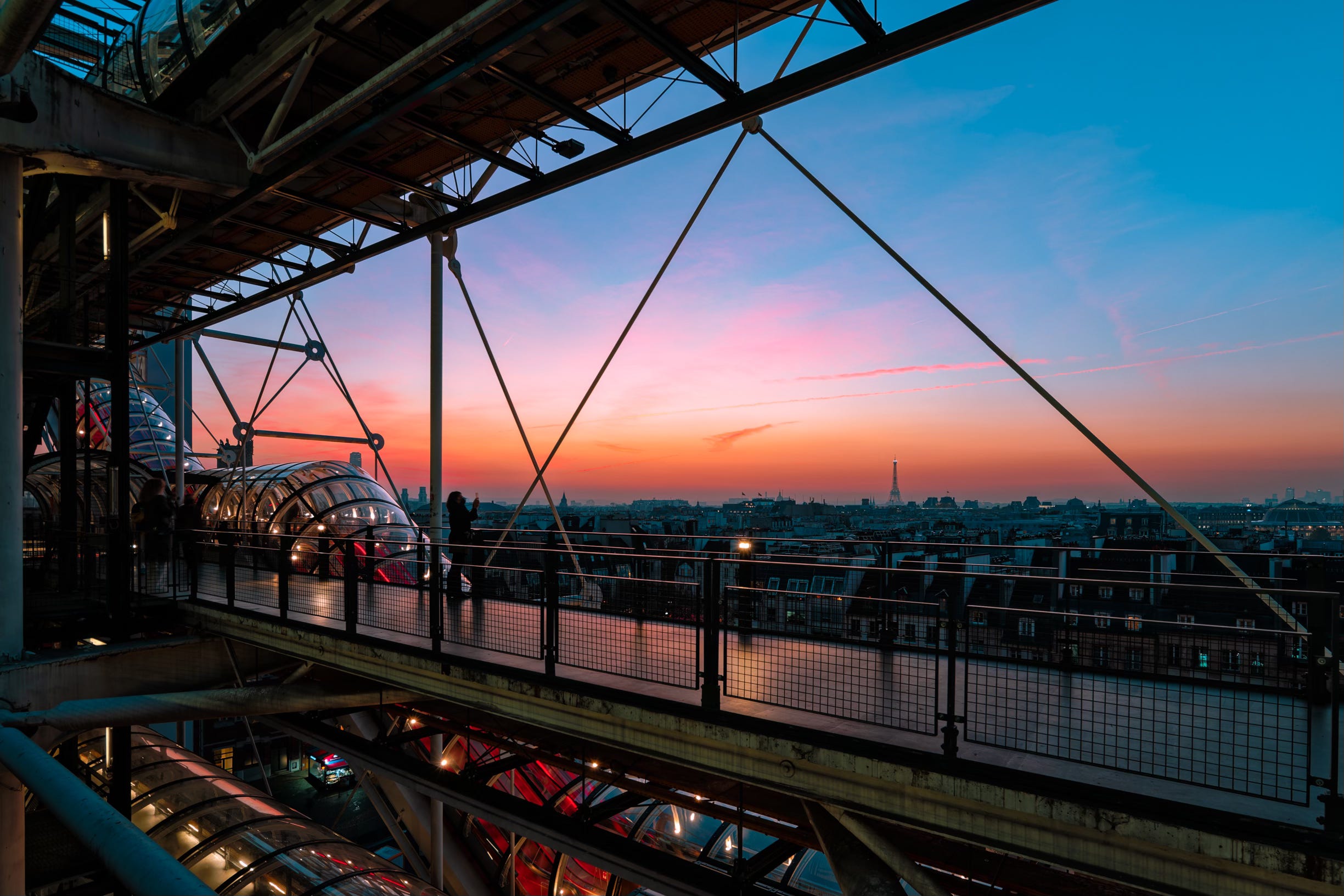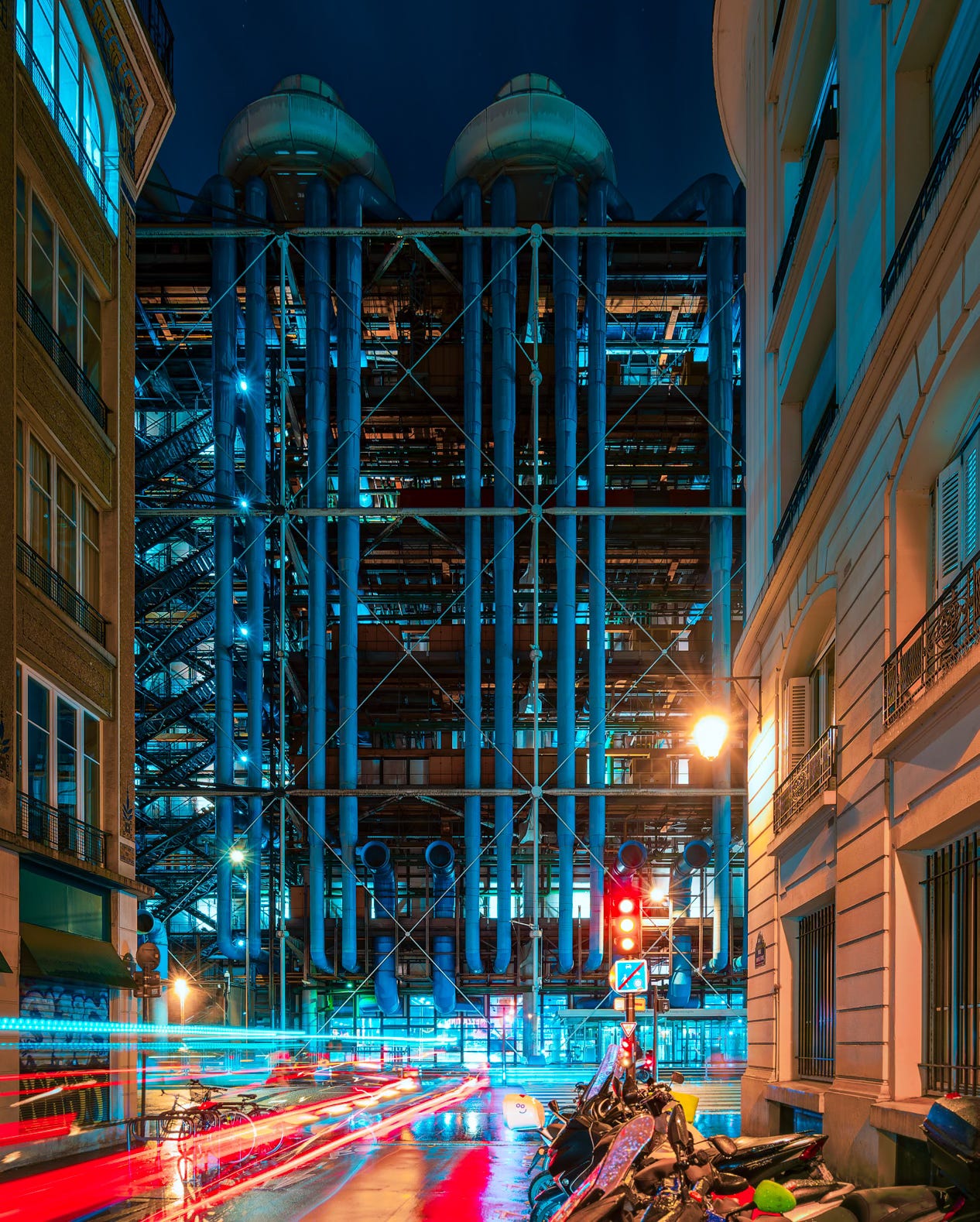Centre Pompidou - a modernist architecture gift to Paris by Richard Rogers, Su Rogers and Renzo Piano
The gift is not the building, but how it sits within the city
This structure has become a local landmark, providing a point of reference when navigating the city. Its distinctive appearance surprises those who catch a glimpse through narrow streets, while also serving as a mental map edge for those moving around the neighbourhood.
Embarking on the second leg of my architectural photography journey in Paris, I found myself at the iconic Pompidou Centre after my venture through The Louvre. As discussed in my previous post, the composition on photographing The Louvre is limited, I was hoping The Pompidou Centre will give me a chance to find something different.
The Pompidou Centre, a masterpiece born out of a late 1960s architecture competition, a design collaboration by the young Richard Rogers, Su Rogers, Renzo Piano, and Gianfranco Franchini. When the building was opened in 1977, it is home to a public information library and the Musee National d’Art Moderne, the largest modern art museum in Europe, it stands as a beacon of contemporary architecture in the heart of Paris.
Capturing a good photo depends on two key factors: skill and timing. While skill can be honed through practice and learning, timing is often left to chance. This becomes even more complex when traveling to a foreign country for a short visit, as you are at the mercy of the weather.
During my visit, the chilly afternoon weather added a unique element to my photos. Despite the building showing signs of age, riding the famous external escalator at the Pompidou Centre still provided a thrilling experience. As the escalator elevated me to the top of the building, the wonders of the architecture and panoramic views of the Paris skyline unfolded before me.
Having done preliminary research, I had no specific compositions in mind due to the long gap since my last visit. However, upon researching the building before my trip, I realised that capturing its unique architecture would be a challenge, given its elongated structure nestled in a bustling urban setting. Instead, I approached this visit as a scouting expedition for potential photographic opportunities, with the intention of returning for a second visit.
While the exhibitions housed within the building were undeniably impressive, it was the expansive external walkway on each floor that truly set The Pompidou Centre apart. These vantage points offered a one-of-a-kind perspective of the surrounding neighbourhood and the broader Parisian cityscape, making the building a success in its own right. As I strolled along these outdoor areas, I was treated to a breath-taking late autumn sunset against the backdrop of a clear Parisian sky, with wisps of low-hanging clouds casting a warm orange glow over the cityscape.
Using the external steel brace structure as a composition frame, I captured a passerby photographing the Parisian skyline with the Eiffel Tower in the background—a moment of city observation from a public space, a unique blend of human interaction and architectural grandeur.
While London boasts public access to buildings like 20 Fenchurch Street (Walkie Talkie), The Garden at 120, and the recently opened Horizon 22, these spaces often serve a dual purpose of securing planning permission from the local authorities. While I have no objections to public access to private buildings, the true essence of public ownership, history, and culture can be felt within The Pompidou Centre, as opposed to the corporate atmosphere often found in other semi-public spaces. The sense of openness and inclusivity within The Pompidou Centre stands in stark contrast to the restricted access and limited amenities offered by other private buildings.
On the following day, as I strolled through the surrounding neighbourhoods, I found myself repeatedly catching glimpses of the building. Whether it was at the end of a long street or peeking over the top of a historic structure, the modernist design never failed to capture my attention. These chance encounters prompted me to contemplate the intricate relationship between public cultural buildings, public spaces, and their connection to the city as a whole.
Returning in the evening to capture more exterior shots, I realised that the most captivating compositions were not necessarily from the front of the building. While the famous escalator and well-documented public space in front of the structure are undeniably striking, I found that positioning the building within its surrounding context offered a more dynamic perspective. Whether approaching from the front and witnessing the distinctive front elevation with its towering posters, or from the back where the futuristic steel and glass structure, together with its distinctive external servicing duct system gleamed in the evening light, each vantage point revealed a unique aspect of the building's character.

When considering the functionality of a city or neighbourhood, the presence of public buildings and gathering spaces is crucial. These spaces serve as hubs where citizens and visitors can come together, interact, and immerse themselves in the city's atmosphere. While the public space in front of The Pompidou Centre undoubtedly stands as its greatest asset, I believe that this symbol of modern hi-tech architecture has a larger role to play within Paris than simply serving as a cultural institution.
The architectural style of this building was truly ahead of its time when it first opened in the 1970s. Although it initially divided public opinion with its futuristic design, it quickly became a memorable landmark in Paris. Serving as a library, museum, viewing platform, and gathering place both inside and outside the building, its unique architecture sets it apart from other public buildings.
This structure has become a local landmark, providing a point of reference when navigating the city. Its distinctive appearance surprises those who catch a glimpse through narrow streets, while also serving as a mental map edge for those moving around the neighbourhood. Additionally, it has become a popular gathering spot and meeting place for locals.
For individuals involved in the construction and placemaking industry, the importance of having a comprehensive architectural design for a public building, masterplan, and operational strategy cannot be overstated. These elements not only ensure that a building seamlessly integrates into its surrounding neighbourhood but also ensure a high level of foot traffic that will benefit both the building and the community at large. Given the potential social and economic impact that a well-designed building can have, the question then arises: should this building adhere to a specific architectural style?
Thank you for taking the time to read this. I would greatly appreciate it if you could provide any comments or feedback you may have. If you are finding this content enjoyable, why not share it with someone you know who may also find it interesting? Your support is truly valued.
My photographs are published on Instagram and online. Additionally, I am available for private commissions and collaborations with other organisations. Please do not hesitate to reach out to me for further inquiries or opportunities.







Nice